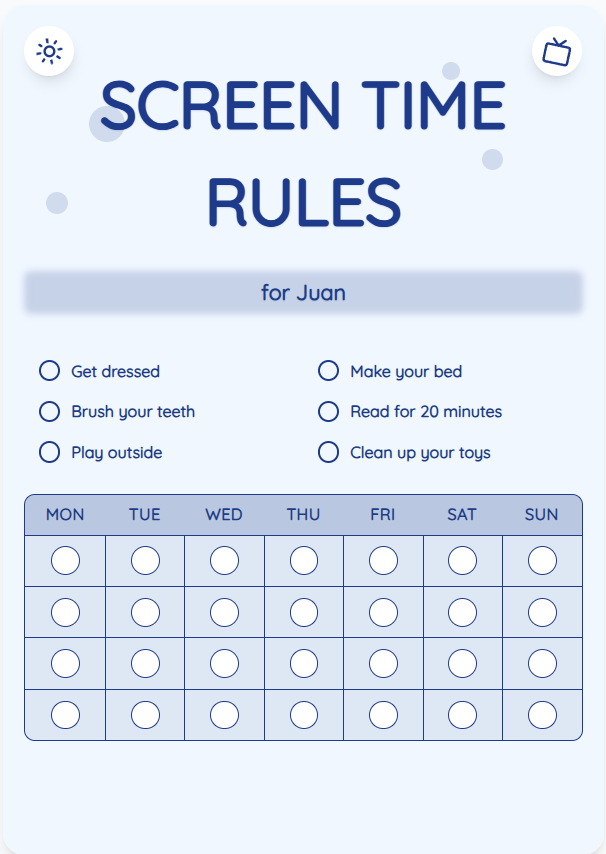Managing Screen Time Limits for Kids: A Comprehensive Guide
As a parent, finding the right balance between allowing your child to benefit from technology and ensuring they don't spend excessive time on screens can be challenging. In this guide, we provide practical tips and strategies to help you set and enforce appropriate screen time limits for children aged 2-12, fostering healthy development and family harmony.
See What Your Screen Time Chart Will Look Like
Here's an example of a beautiful, customizable screen time rules chart you can create for your family

Understanding the Impact of Screen Time on Child Development
Excessive screen time can have negative effects on children's physical health, cognitive development, and social skills. Learn about the importance of setting limits and the recommended guidelines from experts.
Practical Tips for Setting Screen Time Boundaries
Explore actionable strategies such as creating a screen time schedule, using screen time charts, establishing tech-free zones at home, and leading by example with your own device usage habits.
Put These Tips Into Action
Create a custom chart to implement these strategies with your child
Engaging Alternatives to Screen Time
Discover fun and educational activities that can replace screen time, such as outdoor play, arts and crafts, reading together, and family game nights. Encouraging diverse interests helps children thrive beyond screens.
Monitoring and Adjusting Screen Time Limits
Learn how to track your child's screen time usage, have open conversations about technology, and adjust limits based on their behavior and needs. Flexibility and communication are key in finding the right balance.
Practical Tips for Success
- Create a visual screen time chart for easy reference
- Set clear rules and consequences for exceeding screen time limits
- Encourage physical activity breaks during screen time sessions
- Use parental control tools to manage and monitor screen time
Frequently Asked Questions
How much screen time is recommended for children aged 2-12?
The American Academy of Pediatrics recommends limiting screen time to 1 hour per day of high-quality programming for children aged 2-5. For older children, prioritize consistent limits on recreational screen time while encouraging other activities.
What are the signs of excessive screen time in children?
Signs include irritability when screen time is interrupted, difficulty focusing on non-screen activities, disrupted sleep patterns, and decreased interest in social interactions. It's crucial to observe your child's behavior for these cues.
How can I handle resistance from my child when enforcing screen time limits?
Communicate openly with your child about the reasons behind screen time limits. Involve them in setting the rules and offer positive reinforcement for adhering to the limits. Consistency and patience are key in overcoming resistance.
By implementing these practical strategies and being mindful of your child's screen time habits, you can create a healthy balance that promotes their overall well-being. Visit ScreenTimeRules.com to generate personalized screen time charts that simplify the process of managing device usage for your family.
Ready to Transform Your Family's Screen Time?
Join thousands of parents who have successfully managed screen time with our customizable charts.
